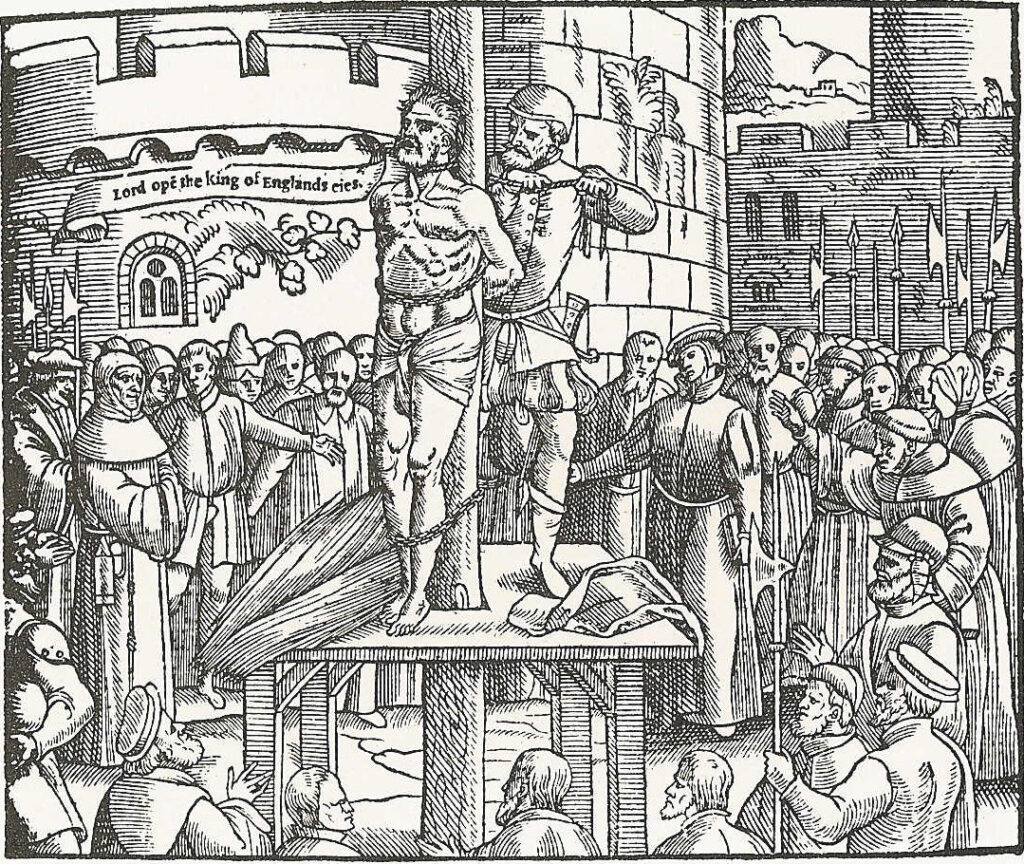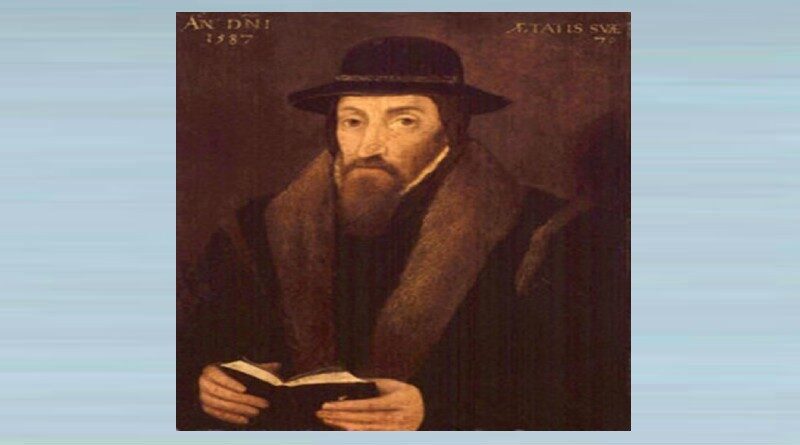John Foxe And The Book Of Martyrs
Posted on 5 February 2021
John Foxe (1516/17 – 1587), born in Boston, Lincolnshire, wrote his Book of Martyrs in 1563 to wide success.
Becoming A Protestant
Aged 16, Foxe was admitted to Oxford University where he studied Logic and went on to become a lecturer in the subject. In 1545, he was forced to resign after becoming a Protestant. This was during the reign of Henry VIII (1491 – 1547) who had earlier broken away from the Catholic church and formed the Church of England, in 1534, which established Protestantism as the country’s official faith.
Following his new religious direction, Foxe travelled to London and began publishing Protestant pamphlets. During this time he was introduced to the Countess of Westmorland whose patronage facilitated Foxe’s entry into the ranks of England’s Protestant elite. It was during this time that Fox began the research into his book – a history of the sufferings of Protestants carried out by Catholics especially in England and Scotland.
The Heresy Acts
When Mary I (1516 – 1518), a Catholic, came to the throne in 1553 she issued a proclamation that she would not compel any of her subjects to follow her religion. However, only a few months into her reign, she had leading Protestant churchmen arrested and imprisoned. Negotiating a deal with the Pope, Mary I went further and revived the Heresy Acts – which had previously been repealed as a way to bridge peace between Catholics and Protestants.
Under the Heresy Acts, 283 Protestants were executed, mostly by being burnt at the stake, in a widespread persecution that swept throughout England – thus making Mary I known to history as ‘Bloody Mary’. Around 800 Protestants, including Foxe, fled into exile by sailing across the British channel to the Protestant friendly parts of Europe.
Actes And Monuments
After the death of Mary I, Elizabeth I (1533 – 1603) came to the throne and re-established Protestantism as the country’s official faith. Foxe felt it safe to return to England and he published his Book of Martyrs in 1563 – its formal title being Actes and Monuments.
Unashamedly biased in its portrayal of the justification of Protestantism, the book also promoted values of national identity and celebrated Elizabeth I as a Protestant monarch. Together, with being published in the English language and having 60+ vivid illustrations, the book was widely accessible to the British public – who eagerly turned its pages in their masses.
The book became so influential and well-loved in promoting the Protestant faith, that it became law for cathedrals and selected churches to have it chained to their bibles. Subsequently, Foxe expanded and updated his book between 1563 and 1570. This work of revising and expanding the Book of Martyrs was even continued after Foxe’s death.
Fox died in 1587 and his original manuscripts for the Book of Martyrs survive – currently held in the British Library.

Images from wikipedia.org/

